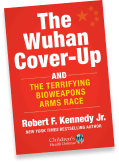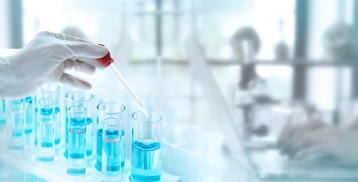240,000 ‘Toxic’ Plastic Particles Found in Average Liter of Bottled Water
Using a new microscopy method, scientists found 240,000 particles of plastic — over 90% comprised of more toxic nanoplastics — in the average liter of bottled water, according to a new study published in Proceedings of the National Academy of Sciences.
Miss a day, miss a lot. Subscribe to The Defender's Top News of the Day. It's free.
By Olivia Rosane
There are 240,000 plastic particles in the average liter of bottled water, the rough equivalent of two standard water bottles, a Columbia University-led study has found.
The finding, published Monday in the journal Proceedings of the National Academy of Sciences, is especially concerning from a human health perspective because 90% of the plastics found were nanoplastics, pieces smaller than a micrometer that researchers say could be “more toxic” than microplastics since their size enables them to infiltrate more parts of the body.
“Whatever microplastic is doing to human health, I will say nanoplastics are going to be more dangerous,” Wei Min, a study co-author and Columbia chemistry professor, told The Washington Post.
Plastic pollution is a vast and growing problem, with more than 30 million tons contaminating the environment by land or by sea each year, according to the Columbia Climate School. These plastics do not stay as bottles or bags but rather break down into smaller and smaller particles.
“People don’t think of plastics as shedding but they do,” Sherri “Sam” Mason, the director of sustainability at Penn State Behrend who did not participate in the study, told CNN.
Mason continued:
“In almost the same way we’re constantly shedding skin cells, plastics are constantly shedding little bits that break off, such as when you open that plastic container for your store-bought salad or a cheese that’s wrapped in plastic.”
Previous research has focused on microplastics — plastic pieces sized between five millimeters and a micrometer — mostly because those pieces were easier to detect.
Scientists have found them everywhere from clouds to human blood. A 2018 study found an average of 325 microplastics per liter of bottled water.
Further studies have found more microplastics, according to Columbia Climate School, but the new study is the first to look for individual nanoplastics.
“People developed methods to see nanoparticles, but they didn’t know what they were looking at,” study lead author and Columbia chemistry graduate student Naixin Qian said in a statement.
The research team was able to do so based on a technology co-invented by Min: stimulated Raman scattering microscopy. This enables researchers to pinpoint individual molecules by shining two lasers on them at once to make them resonate.
Overall, the team found 10 to 100 times more plastic particles in the samples than other studies, in results Mason told CNN were “groundbreaking.”
The researchers also looked for seven individual types of plastic. They found significant amounts of PET plastic, which is what water bottles are typically made from, as well as a nylon called polyamide that is likely used to filter the water.
However, only around 10% of the nanoparticles in the samples could be identified as one of the seven types of plastics.
“You still have a lot of people that, because of marketing, are convinced that bottled water is better,” Mason told The Washington Post. “But this is what you’re drinking in addition to that H2O.”
The health effects of micro- and nanoplastics are still being investigated, but a Lancet review published in December 2023 concluded that the existing research suggests exposure to the particles “can lead to health effects through oxidative stress, inflammation, immune dysfunction, altered biochemical and energy metabolism, impaired cell proliferation, disrupted microbial metabolic pathways, abnormal organ development, and carcinogenicity.”
Study co-author Beizhan Yan of Columbia University told The Hill that nanoplastics may be more toxic “because the smaller the particle size, they are easy to get into the human bodies and then cross different barriers.”
They could even enter cells, interfering with the organelles within them “and causing them to malfunction,” Yan said.
Another concern about plastics, Mason told CNN, is the chemicals they may carry with them into the body.
“All of those chemicals are used in the manufacturing of plastic, so if a plastic makes its way into us, it’s carrying those chemicals with it. And because the temperature of the body is higher than the outside, those chemicals are going to migrate out of that plastic and end up in our body,” Mason said.
“The chemicals can be carried to your liver and your kidney and your brain and even make their way across the placental boundary and end up in an unborn child,” Mason added.
So what is the healthiest way to drink water? Four of the study authors told The Associated Press that they had reduced the amount of bottled water they drank after the results.
Yan next plans to study nanoplastics in tap water, which has also been found to contain microplastics, though fewer than had previously been detected in bottled water.
Mason told CNN that she recommended drinking water from a reusable steel bottle or glass receptacle, while Jane Houlihan, research director for Healthy Babies, Bright Futures, offered advice for limiting plastic exposure more generally.
“We can avoid consuming foods and beverages in plastic containers. We can wear clothing made from natural fabrics and buy consumer products made from natural materials,” Houlihan told CNN.
“We can simply take stock of the plastic in our daily lives and find alternatives whenever feasible.”
Originally published by Common Dreams.
Olivia Rosane is a staff writer for Common Dreams.
Sign up for free news and updates from Children’s Health Defense. CHD focuses on legal strategies to defend the health of our children and obtain justice for those injured. We can't do it without your support.




